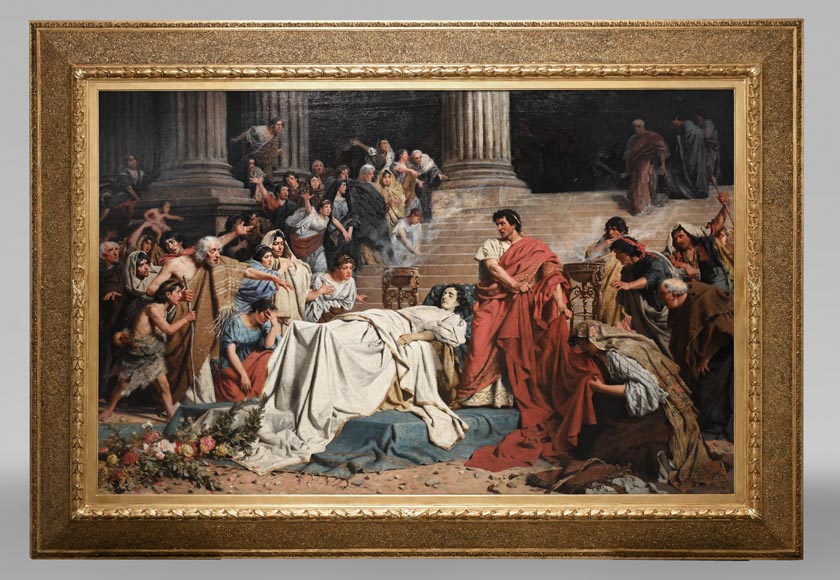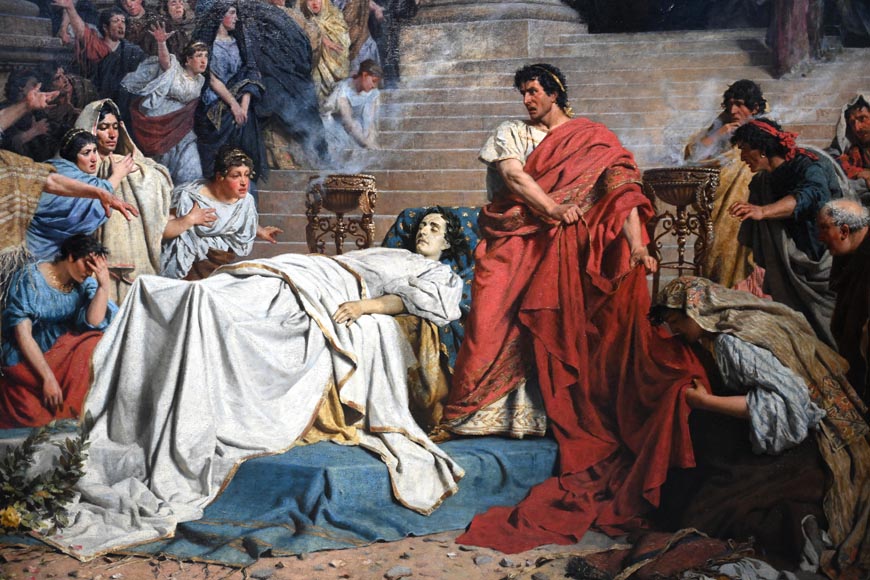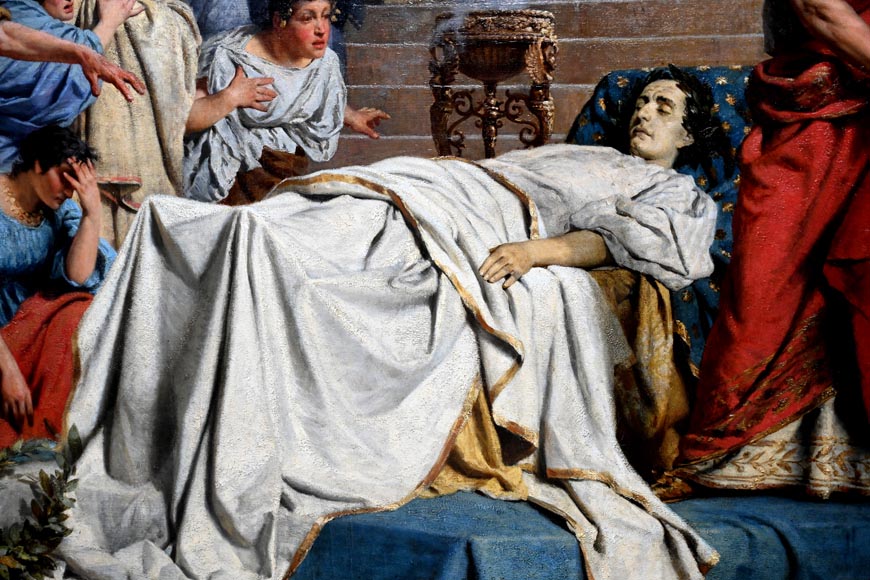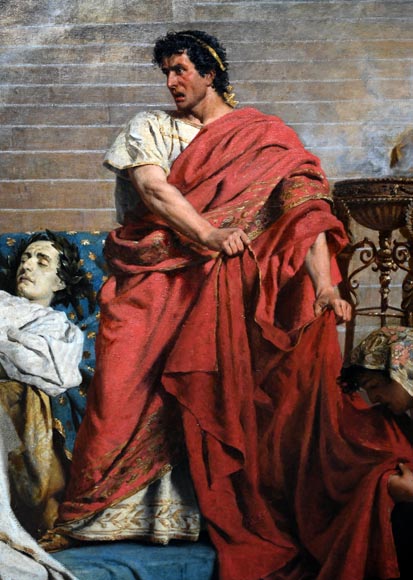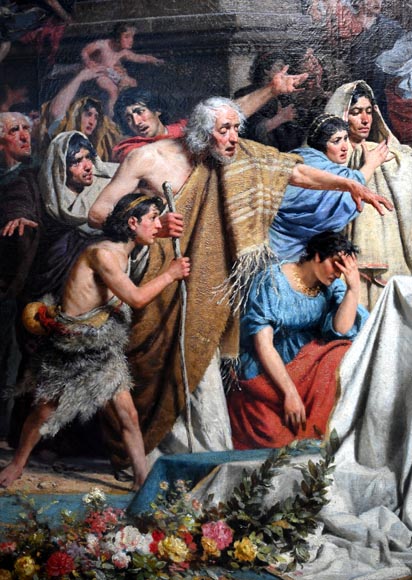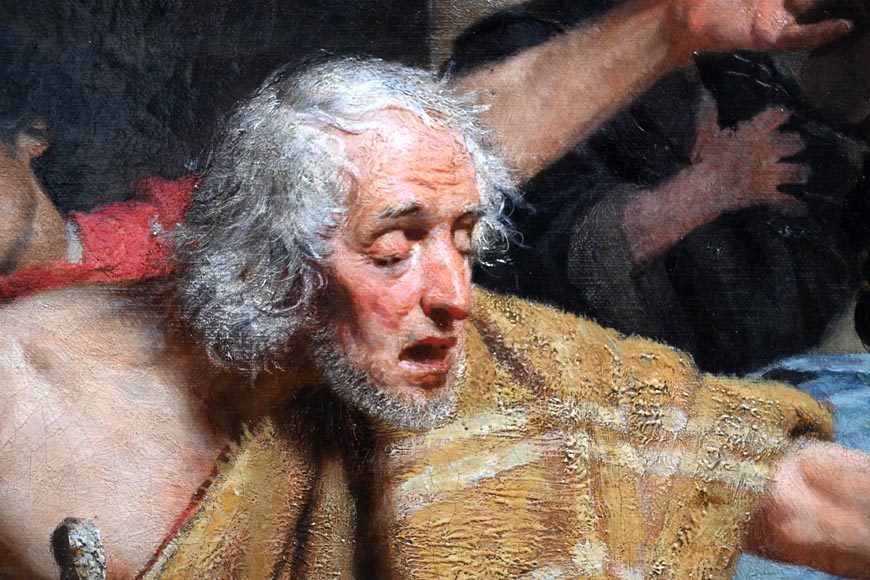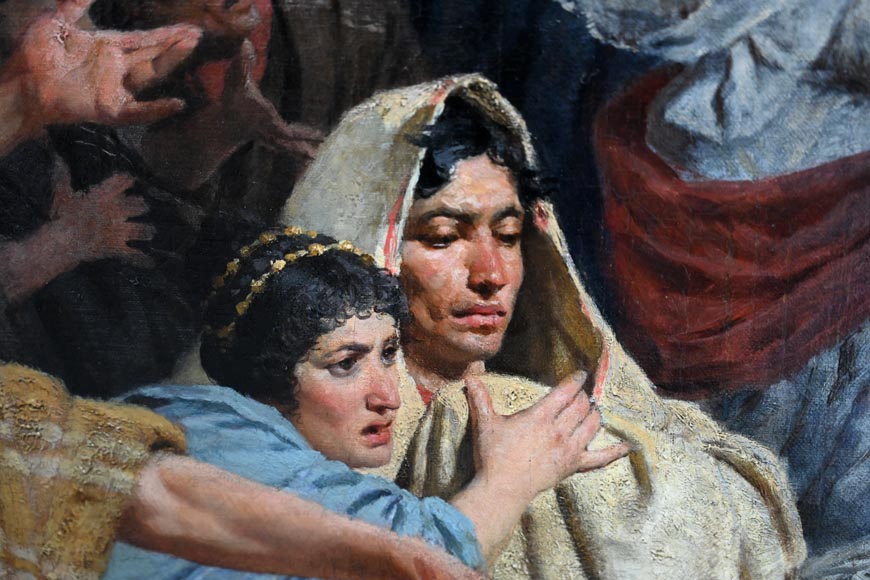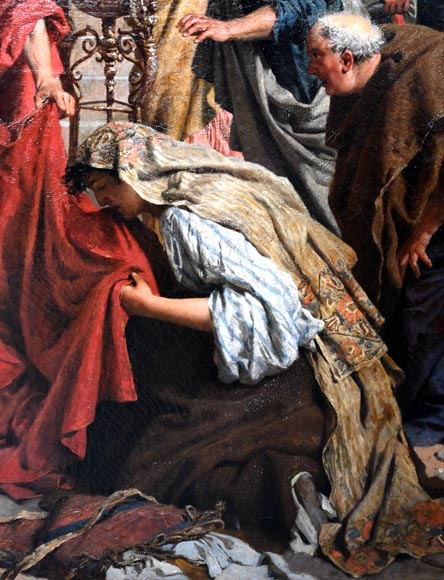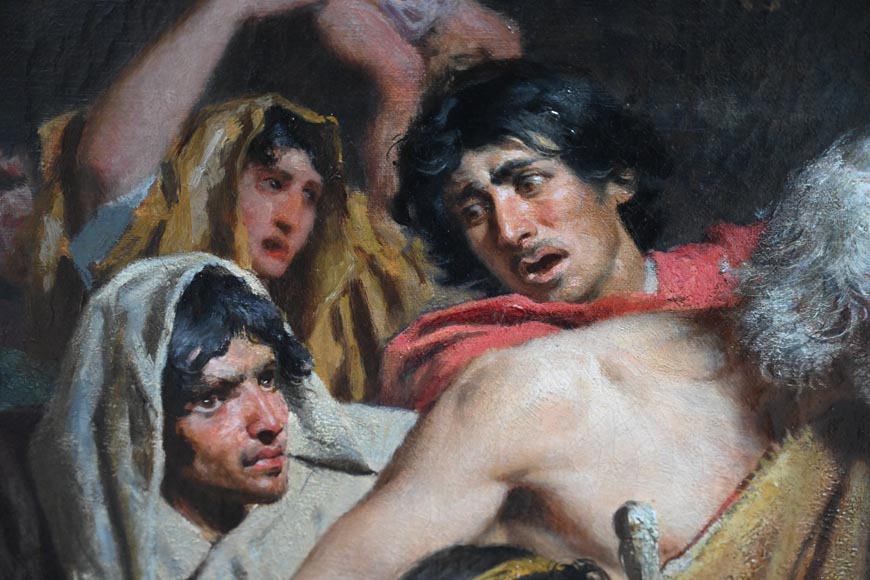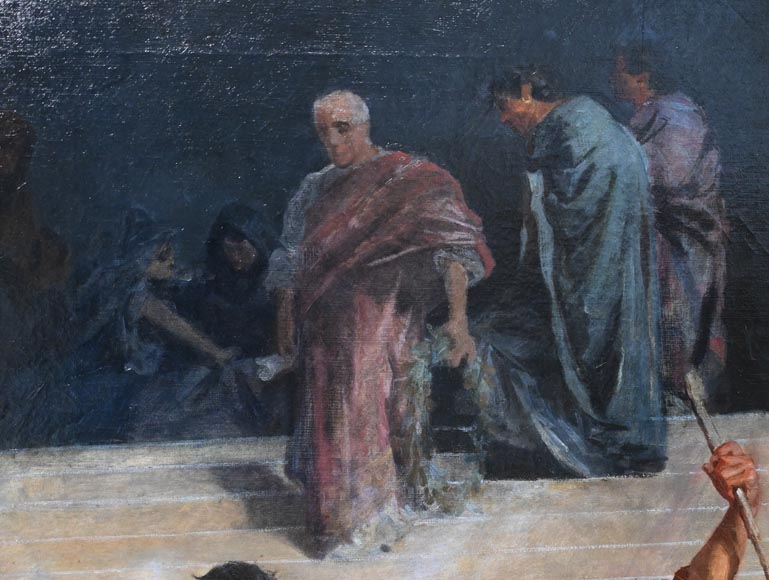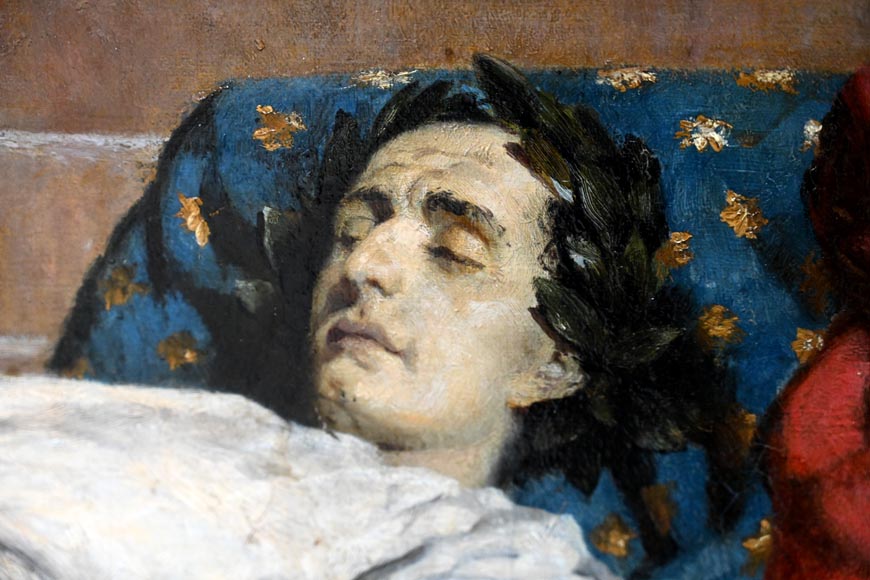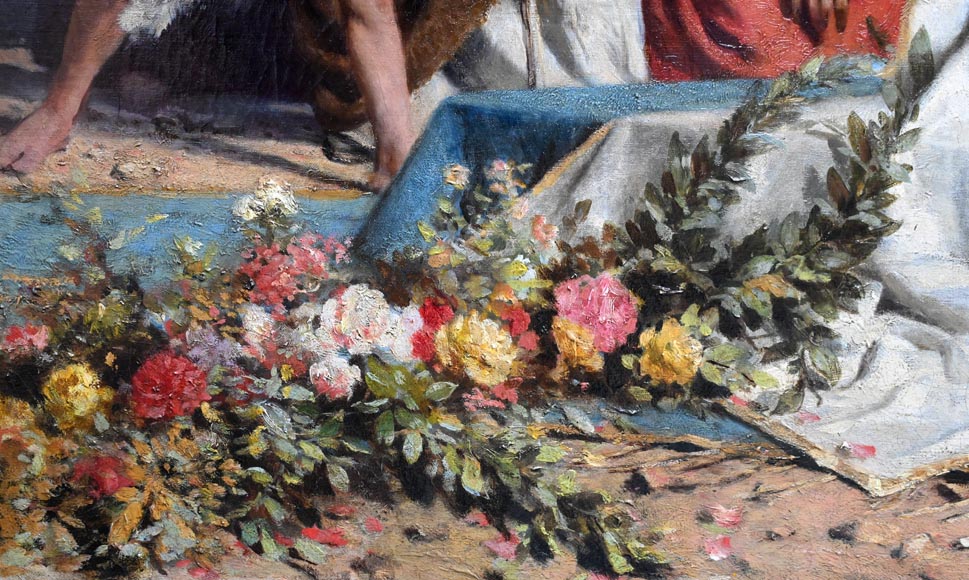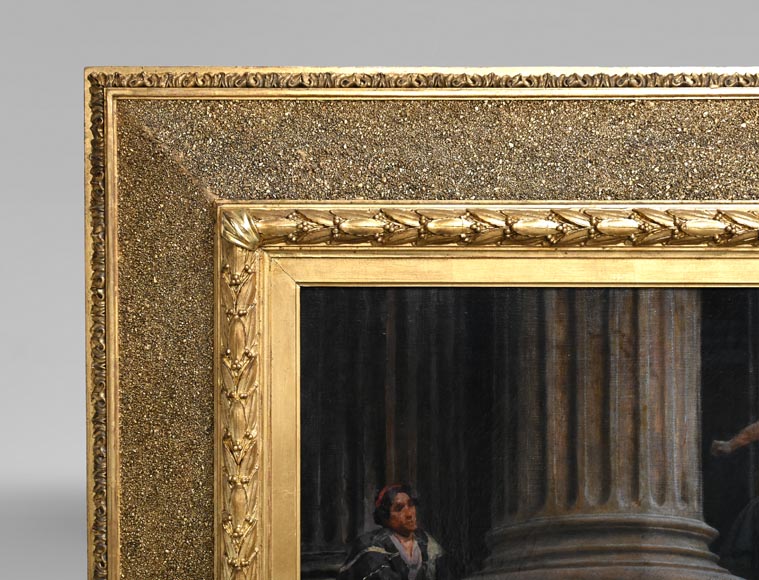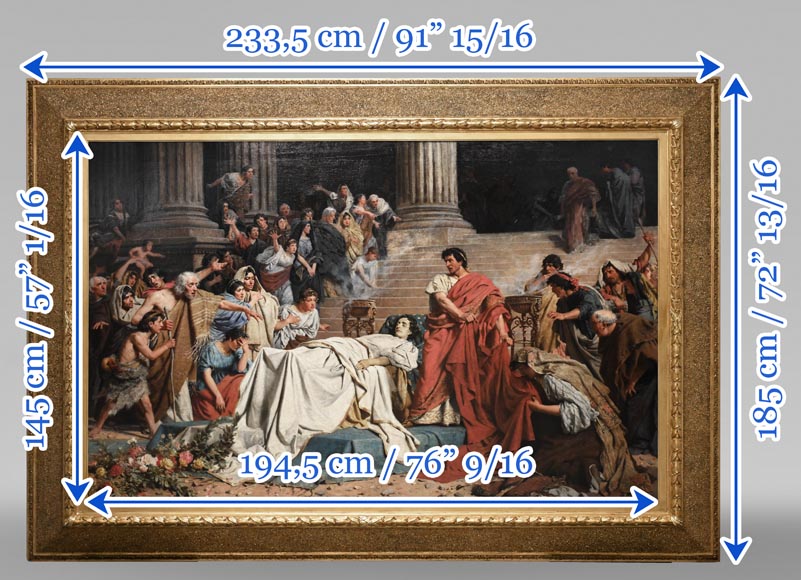Style Other / Ref.13398
The Oration of Mark Antony, second half of the 19th century
Dimensions
Width 89'' ⅜ 227cm
Height 63'' ⅜ 161cm
This painting, depicting Marc Antony’s funeral oration over the body of Julius Caesar, was executed in the second half of the 19th century, after 1879.
The scene of this painting takes place in the days following Caesar’s assassination in 44 B.C.E. Around twenty conspiratorial senators had struck him down with their weapons. In the aftermath of the event, Rome descended into turmoil. While the Senate sought to preserve peace, Caesar’s funeral, depicted here, only added to the public disorder: initially, the people seemed inclined to align with the conspirators, but the public display of Caesar’s body, Marc Antony’s speech, and the reading of the late consul’s will turned the tide. This is the moment shown in the painting, recounted by various ancient authors, including Suetonius and Appian of Alexandria, as well as by Shakespeare.
The imposing architectural setting is structured by a grand staircase and monumental columns, symbolizing both the might of the Roman Empire and Caesar’s authority at its helm. The funeral bed occupies a central place, bearing an inanimate body, pale yet dignified. The grieving populace, gathered to mourn the great man, forms a long diagonal line that fades into the shadowy background, suggesting an endless crowd. The variety of figures, their number, and the diversity of gestures and expressions represent the entirety of the Roman people, come to pay homage to the consul. On the right, Marc Antony raises Caesar’s bloodstained toga.
The scene seems drawn from Shakespeare’s tragedy, in which Marc Antony descends from his platform to invite the people to gather around Caesar for the reading of his will. Suetonius, meanwhile, describes Caesar’s funeral pyre erected in the Field of Mars: the body is laid on an “ivory bier draped in purple and gold” alongside the “garments he wore when he was killed.” The painter carefully portrays the “procession of all those wishing to bring offerings.” Appian of Alexandria adds the detail of Piso, Caesar’s executor, who insisted on making the will and the funeral public. Piso may be the figure descending the steps in the upper right, holding a parchment scroll. According to Appian, after Caesar’s body was carried to the Forum, Marc Antony read aloud his decrees and, overcome with grief, “unveiled Caesar’s body, displayed his robe... torn by dagger blows and still stained with blood.” Although the painter embraces pathos, he refrains from depicting Caesar’s face disfigured by wounds, as described in Plutarch’s account.
Beyond the architectural details and textual fidelity, the artist’s taste for historicism is evident in the inclusion of incense burners and the meticulous rendering of garments.
According to ancient sources, the tumult caused by Caesar’s funeral was so great that it culminated in the creation of a spontaneous pyre, as the crowd could not agree on another location and the risk of fire was lessened in the Forum. The people then sought to avenge Caesar by setting fire to the homes of the conspirators. The moment depicted is thus a pivotal one: between approval of the assassins and mourning, and between mourning and vengeance, embodying a peak of tension and emotional expressiveness.
The renowned German history painter Karl von Piloty created an Assassination of Julius Caesar that might be considered a prelude to this work.
Though less famous than the assassination of Julius Caesar, the subject of Marc Antony’s oration saw renewed interest in the 19th century. For instance, Georg Edward Robertson (1864-1926) created a Funeral Oration of Marc Antony Over the Body of Caesar around 1894-1895, now held in the Hartlepool Museums’ collections. Its composition features similar elements to this painting: an imposing architectural framework evocative of ancient Rome; the mourning crowd; the body laid out for all to see; and Marc Antony, advocating for Caesar and his cause against that of the tyrannicides.
This monumental work thus captures a lesser-known but equally fertile subject, rich in expressiveness and historical representation, deeply rooted in the century of its creation.
Informations
Price: on request
Recommended for you :
Dimensions:
Width: 234
Height: 185
Depth: 11
Dimensions:
Width: 420
Height: 253
Depth: 3
Dimensions:
Width: 178
Height: 129
Depth: 14
Dimensions:
Width: 65
Height: 195
Depth: 3
Dimensions:
Width: 77
Height: 110
Depth: 5
Dimensions:
Width: 43
Height: 63
Dimensions:
Width: 117
Height: 90
Depth: 8
Dimensions:
Width: 102
Height: 82
Depth: 10
Dimensions:
Width: 20
Height: 18
Dimensions:
Width: 32
Height: 41
Dimensions:
Width: 76
Height: 84
Dimensions:
Width: 227
Height: 298
Depth: 9



